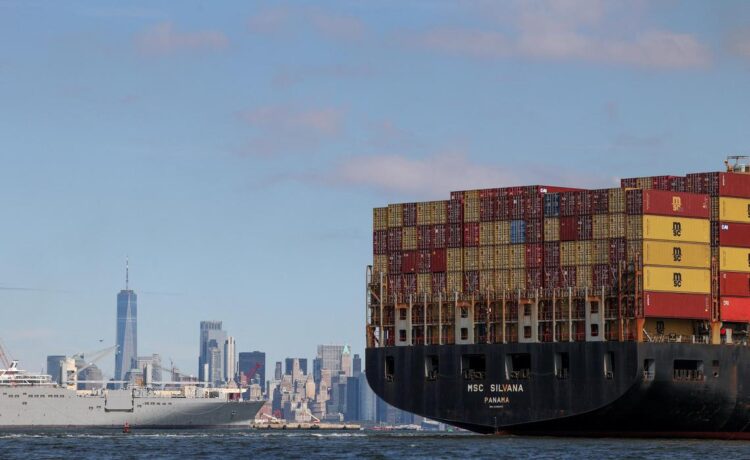Melbourne – The US dollar surged in early Asian trading on Feb 3 and stocks were primed for losses after US President Donald Trump carried out his threat to impose tariffs of 25 per cent on Canada and Mexico and 10 per cent on Chinese goods from Feb 4, sparking vows of retaliation.
The US currency advanced against most of its major peers on Feb 3, sending China’s offshore yuan to a record low, the Canadian dollar to its weakest since 2003, the euro to its lowest since November 2022 and the Mexican peso to an almost three-year low.
The US dollar surge also saw the Singapore dollar fall 0.9 per cent to 1.3687 per greenback as at 8.01am.
Oil prices jumped at the market open on fears a trade war and disruption in crude supply from two of the United States’ biggest suppliers.
US West Texas Intermediate crude was at US$74.27 a barrel, up US$1.74, or 2.4 per cent, by 2319 GMT, after hitting more than a week’s high at US$75.18 a barrel earlier in the session.
Brent crude futures rose 73 US cents, or 1 per cent, to US$76.40 a barrel.
The first major Asian stock markets to open took an immediate hit with Japan’s Nikkei averaged tumbling2 per cent and Australia’s S&P/ASX 200 down 1.9 per cent.
The rapid escalation in trade tensions is fuelling a flight to safe haven assets as uncertainty mounts over everything from inflation and central bank policy easing to Mr Trump’s next move.
“The market needs to structurally and significantly reprice the trade war risk premium” with the announcements at the weekend roughly three times larger than what was envisaged, George Saravelos, head of FX research at Deutsche Bank, wrote in a note to clients. “For Canada and Mexico, we see this trade shock – if sustained – as being far larger in economic magnitude than that of Brexit on the UK and would expect both countries to enter a recession in coming weeks.”
The S&P 500 reversed gains and fell 0.5 per cent following the White House announcement last Friday (Jan 31), the dollar climbed against major peers and the yield on 10-year Treasuries rose two basis points. Bitcoin slumped.
Behind the rally in the dollar is the bet that tariffs will fuel inflationary pressures and keep US interest rates elevated, while also hurting foreign economies more than the United States and adding to the greenback’s safe-haven lure. Foreign currencies get hurt as American demand declines for costlier imports.
Traders are on alert for big swings in stock markets in sectors that are considered the front lines of any trade war. A UBS Group basket of stocks at risk from the proposed tariffs sank almost 4 per cent on Jan 31 on concerns levies would fan inflation and hit bottom lines.
Automakers such as General Motors and Stellantis, which have global supply chains and massive exposure to Mexico and Canada, could see significant moves. Electric vehicle manufacturers Tesla and Rivian Automotive could also feel the pinch. Mentions of the word “tariffs” are already surging on earnings calls.
“What makes the issue more of a concern for risky markets, and an increased challenge for market participants to price, is the fact that the Canadians were so quick to counter,” said Chris Weston, head of research at Pepperstone Group in Melbourne. “The market now looks further afield, with China the far bigger issue for global markets, and we’ve already heard that they will come back and counter, although we have limited clarity on what that looks like.” BLOOMBERG, REUTERS
Join ST’s Telegram channel and get the latest breaking news delivered to you.

